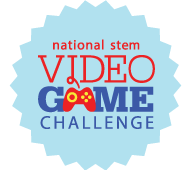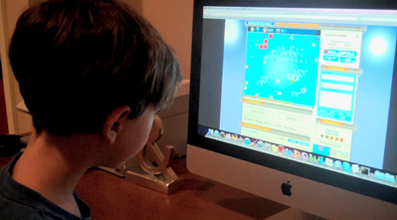[2] Black, P., McCormick, R., James, M., & Pedder, D. (2006). Learning how to learn and assessment for learning: A theoretical inquiry. Research Papers in Education, 21(02), 119-132.
[3] Kafai, Y. (1995). Minds in play: Computer game design as a context for children’s learning. NJ: Lawrence Erlbaum Associates, Inc.
[4] Robertson, J., & Howells, C. (2008). Computer game design: Opportunities for successful learning. Computers & Education, 50(2), 559-578.
[5] Papert, S. (1993). Mindstorms: Children, computers, and powerful Ideas. New York: Basic Books, Inc.
[6] Lave, J. & Wenger, E. (1991). Situated learning: Legitimate peripheral participation. MA: Cambridge University Press.
[7] Harel, I., & Papert, S. (1990). Software design as a learning environment. Interactive Learning Environments, 1(1), 1-32.
[8] Prensky, M. (2008). Students as designers and creators of educational computer games: Who else? British Journal of Educational Technology, 39(6), 1004-1019.
[9] Robertson, J., & Howells, C. (2008). Computer game design: Opportunities for successful learning. Computers & Education, 50(2), 559-578.
[10] Werner, L., Campe, S., & Denner, J. (2012). Children learning computer science concepts via alice game-programming. SIGCSE ’12 Proceedings of the 43rd ACM technical symposium on computer science education, 427-432.
[12] Wu, M., & Richards, K. (2011). Facilitating computational thinking through game design. Edutainment Technologies. Educational Games and Virtual Reality/Augmented Reality Applications, 220-227.
[15] Denner, J., Werner, L., & Ortiz, E. (2012). Computer games created by middle school girls: Can they be used to measure understanding of computer science concepts? Computers & Education, 58(1), 240-249.
[16] Kafai, Y. (1995). Minds in play: Computer game design as a context for children’s learning. NJ: Lawrence Erlbaum Associates, Inc.
[17] Kafai, Y., Carter Ching, C., & Marshall, S. (1997). Children as designers of educational multimedia software. Computers & Education, 29(2), 117-126.
[18] Bishop-Clark, C., Courte, J., Evans, D., & Howard, E. V. (2007). A quantitative and qualitative investigation of using Alice programming to improve confidence, enjoyment and achievement among non-majors. Journal of Educational Computing Research, 37(2), 193-207.
[19] Maloney, J. H., Peppler, K., Kafai, Y., Resnick, M., & Rusk, N. (2008). Programming by choice: urban youth learning programming with scratch. ACM SIGCSE Bulletin, 40(1), 367-371.
[20] Kafai, Y., Carter Ching, C., & Marshall, S. (1997). Children as designers of educational multimedia software. Computers & Education, 29(2), 117-126.
[21] Sheridan, K., Clark, K. & Peters, E. (2009). How Scientific Inquiry Emerges from Game Design Paper. In I. Gibson et al. (Eds.), Proceedings of Society for Information Technology & Teacher Education International Conference 2009 (pp. 1555-1563). Chesapeake, VA: AACE.
[22] Clements, D. (1987). Longitudinal study of the effects of Logo programming on cognitive abilities and achievement. Journal of Educational Computing Research, 3(1), 73-94.
[23] Sheridan, K., Clark, K. & Peters, E. (2009). How Scientific Inquiry Emerges from Game Design Paper. In I. Gibson et al. (Eds.), Proceedings of Society for Information Technology & Teacher Education International Conference 2009 (pp. 1555-1563). Chesapeake, VA: AACE.
[24] Harel, I., & Papert, S. (1990). Software design as a learning environment. Interactive Learning Environments, 1(1), 1-32.
[25] Kafai, Y. (1998). Video game designs by girls and boys: Variability and consistency of gender differences. In Jenkins, H., Cassell, J. (2000). From Barbie to Mortal Kombat: Gender and Computer Games. Massachusetts: MIT Press.
[36] Denner, J., Werner, L., & Ortiz, E. (2012). Computer games created by middle school girls: Can they be used to measure understanding of computer science concepts? Computers & Education, 58(1), 240-249.
[37] Papastergiou, M. (2009). Digital game-based learning in high school Computer Science education: Impact on educational effectiveness and student motivation. Computers & Education, 52(1), 1-12.
[38] Wentworth, P. (2010). Can computational thinking reduce marginalization in the future internet? Kaleidoscope: Beyond the internet? Innovations for Future Networks and Services, 1-5.

